JADE, GREENSTONE, POUNAMU - what's what?
New Zealand Jade – Pounamu – Greenstone – Tangiwai …..
What’s the difference??
We are often asked - What’s the difference between jade and greenstone? What’s Inanga? Is pounamu jade? All good questions when you’re trying to work through a lot of information about the various stones that we use in New Zealand to carve art that is worn and displayed.
So let’s dive right in!
All New Zealand Jade is Nephrite – formed in the Alpine Fault that runs the length of our country. It is a stone that is created over millions of years under the enormous pressures and heat generated in this volcanic zone. Geologists suggest that it formed in depths of over 10kms (over 6 miles) where rock becomes molten and mixes with surrounding minerals. This happens under immense pressure and changes the chemical and physical nature of the stone. When this molten stone cools and solidifies, jade is the wonderful reward.
GREENSTONE or JADE?
In New Zealand you will often hear jade referred to as ‘Greenstone’. This is a local name for our Jade, so if someone says ‘I got this cool piece of greenstone in Aotearoa’ they will be talking about our local jade – New Zealand nephrite. They might also say ‘I got this awesome pounamu in New Zealand’ and they might have a piece of jade, but it could be another stone – equally valuable, but not jade.
POUNAMU – Jade only?
Pounamu is a word that describes stone that Māori, and many New Zealanders, consider has a spiritual significance. It is highly prized stone for its beauty, its hardness and for its value as a symbol of authority and status. Pounamu was also traditionally used to trade and to develop relationships.
You may hear the term ‘Pounamu’ used to describe jade – and rightly so - but this is where it gets a little tricky! Pounamu is also a term used to describe some other stone types that are highly prized by Māori and stone carvers - TANGIWAI and SERPENTINITE.
TANGIWAI is an absolutely gorgeous stone, rare and highly valued for making jewellery. It is recognized as pounamu – but it is not jade. Tangiwai is a form of bowenite. It is generally a very translucent stone and is found in small deposits in Anita Bay in the entrance to Fiordland. It is regarded as a semi-precious stone but is widely used when available because, in the right hands, can produce spectacular carved jewellery.
Tangiwai gets its name from tears that come from a great sorry – Tangi means ‘to cry’ and wai means ‘water’ or ‘tears’. Māori legend is that this stone is formed from the crystallised tears of a stolen Chiefs’ wife.
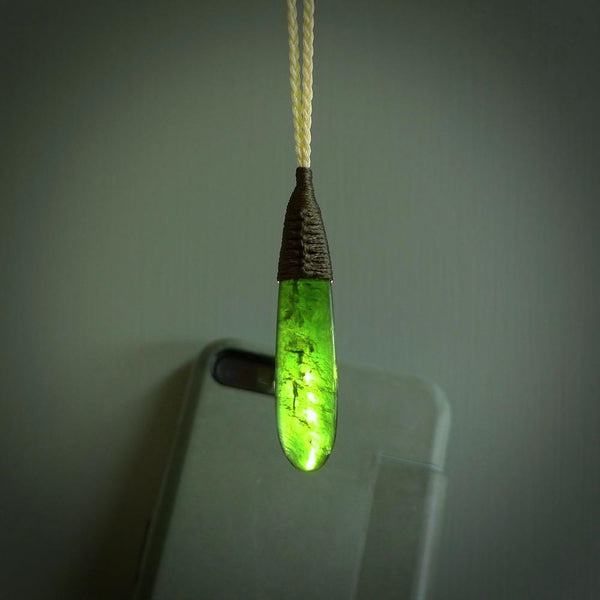
Another stone that qualifies as pounamu is SERPENTINITE. This is a green metamorphic rock rich in hydrous magnesium silicates. This is often found in the same areas as our jade. It plays a role in some of the jade types that we find in New Zealand because the minerals in this stone are included into jade as it forms. It is also a stone that is valued and carved in its own right – it is quite beautiful and, because it is a hard stone, it polishes beautifully.
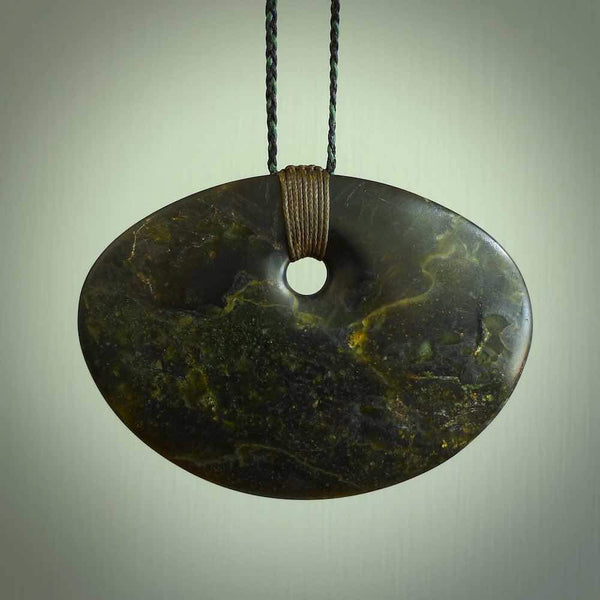
This little flow chart might help sort out the ‘stone’ salad for you!
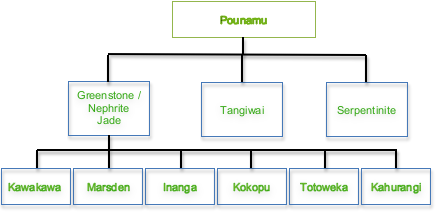
The various names trace back to Māori descriptions that they gave the stone - usually because it reminded them of things they saw in their daily lives. This is not an exhaustive list of the jade types found here – but these are some of our favourites!
KOKOPU for example is usually a pale green stone with dark spots sprinkled through it. It looks like a native trout found in New Zealand streams which is called kokopu in Māori (te reo). So this resemblance gave this type of jade its name.
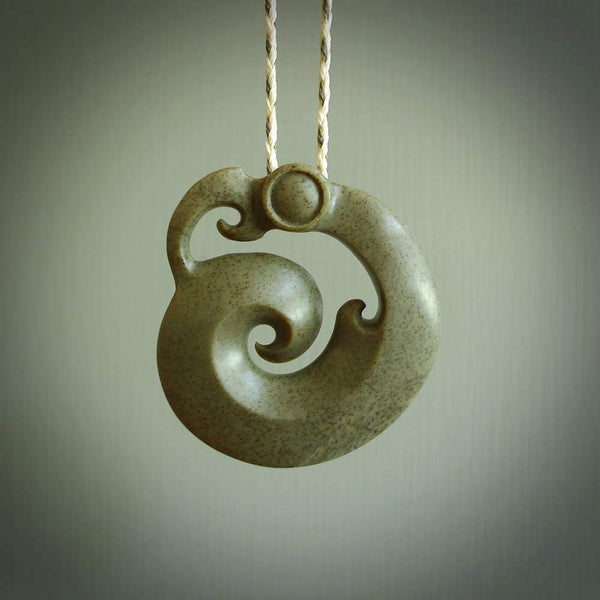
TOTOWEKA (sometimes called tutuweka) has reddish colouration in spots and splashes through a mid green stone – sometimes it’s just a hint. It is quite rare and can look quite beautiful in carved and polished pieces. Māori named this stone after the blood (toto) of a Weka which is a native bush hen that was a part of their diet.
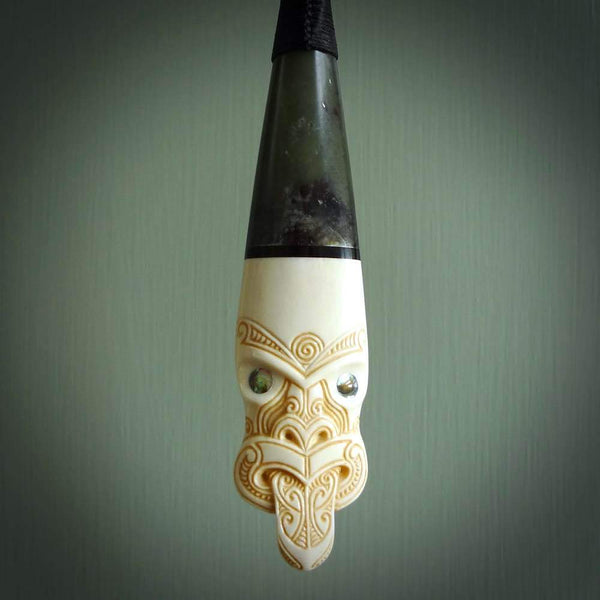
KAWAKAWA is a strong, dark green (sometimes almost black) with dark veins and spotted inclusions through it. KAWAKAWA is carved a fair bit in New Zealand – it is readily available and is a little easier to carve than some other jade types. It holds shapes well and when well carved and polished produces stunning jewellery. KAWAKAWA is named after the kawakawa tree (Pepper tree) - the leaf is also a shiny bright green with darker coloured veins.
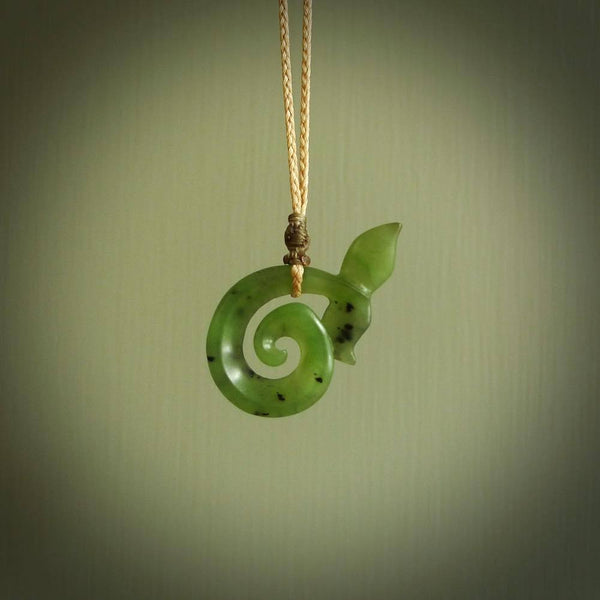
MARSDEN – this type of stone comes from an area outside Greymouth on the West Coast of New Zealand’s South Island. It is a spectacular stone that comes in a variety of colours ranging from pale greens through very dark greens. It also comes in a type called ‘flower jade’ – this is generally the part of the stone closest to the outside that is showing the greatest degree of inclusion and oxidation. This results in gorgeous colours – golds, reddish browns and a wide array of greens. This stone is popular with carvers and produces some of the most wonderful carved art imaginable. Definitely worth keeping an eye out for this stone.

INANGA is a delightful jade that we find in subtle, subdued colours that range from pale, milky greens that sometimes shows hints of blue. It is a gentle coloured stone which we have seen in a variety of colours and with varying degrees of translucency. It is perfect for subtle designs and is a stone that reveals it’s beauty on the second and third look! INANGA is named after a little juvenile minnow we call whitebait.
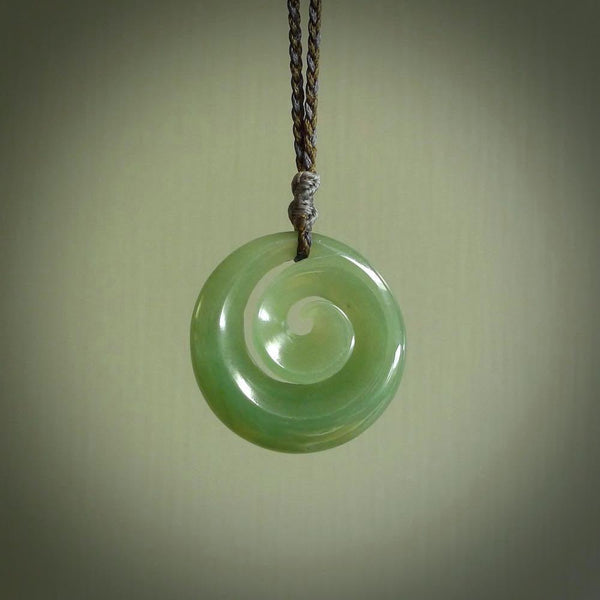
KAHURANGI – possibly the most prized of all New Zealand jade, KAHURANGI is a translucent and bright apple green coloured stone. The best is flawless in appearance – it has no visible inclusions and is a beautiful hard green stone. Recently we have seen a trend among artists to utilise jade that is visually interesting because of the variability of the stone – flower jade being the prime example – but KAHURANGI has a long been treasured as an exceptional and valuable jade. It has always been a rare jade so it was used to produce ceremonial adze that were gifted to tribal leaders to recognise their authority and standing in the community.
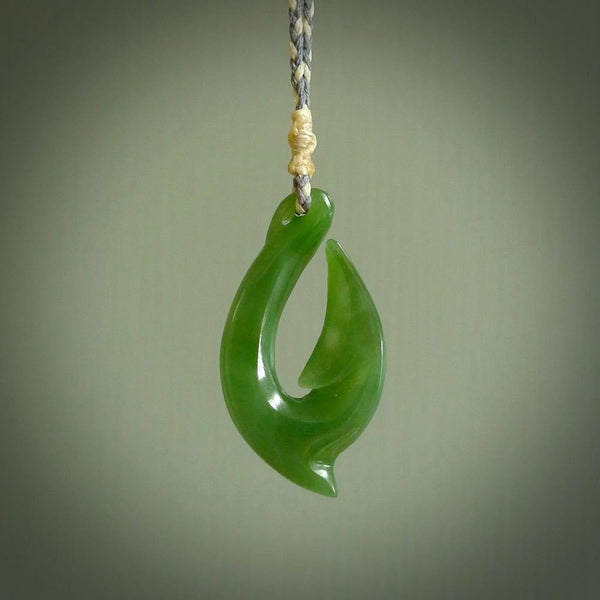
This is not an exhaustive list of the jade found in New Zealand – we have other rare jade types that are equally beautiful and have interesting names that reflect their similarity in some way to local flora and fauna. This christening of the stone with names taken from things that were important for the daily lives of Māori shows the high regard in which jade is held here in New Zealand. It is regarded as a ‘TAONGA’ – a treasure, something that is prized and has significance beyond its commercial value.
Pounamu has been used to craft tools, weapons and jewellery – today skilled craftmen still use pounamu adze to work wood and keep important skills and traditions alive. Predominantly it is carved into jewellery and artifacts that are worn and displayed. Many of these pieces are carved with a specific purpose in mind – to tell or record something important, and these pieces generally are handed down through family lines and become personal treasures or TAONGA.










































































































7 Comments
Thank you for spreading the seeds of beautiful knowledge.
Personally I love how pounamu are ancient, sacred, and designed so stunningly attractive. I have been looking at these tiki for hours!
The combination of sky, fire, earth and water is breathtaking…
Thank you for posting this informative blog. Keep sharing.
dear bo—88 and laptop challenged. so is there anyway that you can print out the above info on n.z. jade. and snail mail it to me? hope so. so very fascinating and informative—as my above comments already have said.
thanks once again.
am enjoying my Kerry Thompson n.z. Marsden pounamu jade today and shall do so every day.
kia ora
paula. (bakalar)
decided to once again check out this wonderful and informative information….as I browse, once again, thru your collection. so enjoyable doing it. but…how many pendant can a “girl” wear anyway???!!!!!!! and don’t answer—-as many as she want to wear.
take good care and stay safe. and stop trying to tempt me!!!!!! :):):). looking forward to seeing your new wonderful pieces…anytime!!!!!!!
many thanks.
Hi Selena – thanks for your comments :)
Marsden jade is named for the region it comes from – the Marsden Valley inland from Greymouth on the West Coast of New Zealand’s South Island. Marsden was a gold mining settlement (long gone now) and I think that in the mining process jade was discovered. The jade from this area is really top quality and carvers generally love it – it’s a really true, clean stone that allows some really intricate carving. I’ve seen some awesome work in this stone!
Thanks again for your comments Selena – cheers, Bo